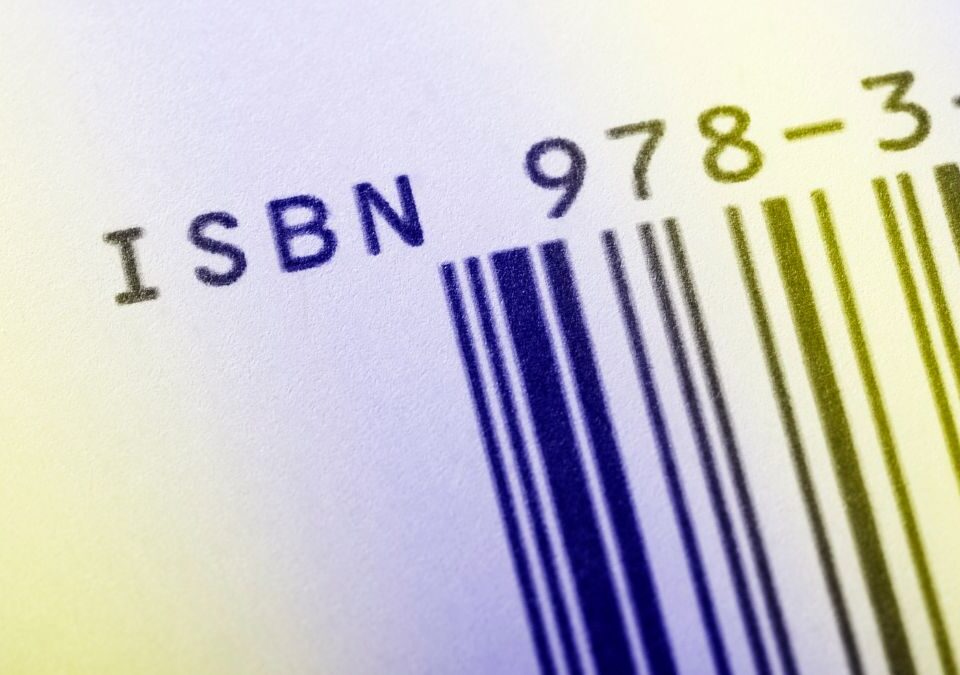
How to Write Your Name on a Book: Tips That Make It Truly Yours
September 23, 2025
How Much Does It Cost to Publish a Book? A 2025 Guide to Real Costs
September 24, 2025Have you ever struggled to explain an entire story in just a few sentences? Crafting a short synopsis can feel daunting, but it’s a crucial skill for any writer. A concise synopsis not only helps you pitch your book to publishers, it also serves as the teaser that hooks potential readers. In this article, we’ll explore synopsis – what it is, why it matters, and how you can write a compelling one.
Synopsis: What Is It?
For anyone who has ever typed “synopsis what is” into a search bar, here’s the simple answer: a synopsis is a brief summary of a larger work. It gives a broad overview of your story’s main plot, characters, and conflict in a condensed form. In other words, a synopsis tells readers or industry pros what your book is about in a nutshell. (Fun fact: The word synopsis comes from Greek roots meaning “a general view” – essentially “seeing together.”)
For example: consider Harry Potter and the Sorcerer’s Stone. A short synopsis for this famous novel could be: “An orphaned boy discovers he is a wizard and attends a magical school, where he makes friends and ultimately faces the dark sorcerer who once tried to destroy him.”
Synopses come in various lengths depending on their purpose. Sometimes it’s just one line (in the film world, an ultra-short synopsis is known as a logline). Other times, it might be a few paragraphs on a book’s back cover or an extended one-page summary for a publisher. No matter the length, the goal is the same: give the essence of the story in a way that’s easy to grasp.
Why a Short Synopsis Matters
Why put so much effort into writing a synopsis? Here are a few important reasons:
- Hooking readers: A well-written synopsis can grab a reader’s attention and persuade them to give your book a try. Think about the blurb on the back of a novel – that short description often determines whether someone buys or reads the book.
- Pitching to publishers or agents: If you’re seeking traditional publication, agents and editors will likely ask for a synopsis. This document shows them the entire storyline at a glance, helping them decide if your plot works and is marketable. (In fact, publishing expert Jane Friedman notes that a synopsis is an industry tool that must convey your story’s whole narrative arc – including the ending.)
- Clarifying your own story: Writing a synopsis can be a great exercise for authors. It forces you to identify the core of your plot and the most important character arcs. If you can’t summarize your story clearly, it might signal that the story itself needs focus.
- Marketing and metadata: In self-publishing and online bookstores, a short synopsis (often used as the book description) is critical. It’s not only what readers see, but it also feeds search algorithms. An engaging, keyword-friendly synopsis can improve your book’s discoverability.
In short, a synopsis is both a sales pitch to your audience and a proof test for your story’s coherence. Remember, for many agents or editors, the synopsis might be read before your manuscript, making it your one chance to impress them with the story’s outline.
How to Write a Short Synopsis
“I didn’t have time to write a short letter, so I wrote a long one instead.” — Mark Twain
This famous quip humorously highlights how writing concisely can be more challenging than writing at length. The same is true for a short synopsis – it’s not always easy to distill a complex story down to a few paragraphs. But with practice and a clear strategy, you can craft a synopsis that does your book justice. Here are some tips to get you started:
- Know your audience: Tailor your synopsis to its purpose. If you’re preparing a synopsis for an agent or publisher, it should reveal the entire story, including the ending (no cliffhangers here). But if it’s a synopsis for readers – say, a back-cover blurb – you’ll want to tease the conflict and stakes without giving away the conclusion.
- Stick to the main storyline: Focus on your protagonist(s), their primary goal or conflict, and the central plot arc. Leave out side characters and subplots that aren’t essential. A short synopsis should present a clear beginning, middle, and end of the main story without detours.
- Introduce the key characters and conflict early: Make sure the reader knows who the story is about and what problem or challenge they face. For example, “Jane Doe is a young detective who must solve her town’s biggest mystery before innocent people get hurt.” This gives context and stakes right away.
- Write in clear, neutral language: Synopses are typically written in third-person present tense, regardless of your book’s narrative voice. Keep the tone professional and factual – you’re summarizing the story, not reviewing it. Avoid phrases like “in an exciting twist” or “a heartwarming tale,” and instead just tell what happens in straightforward language.
- Edit and refine for brevity: Every word counts in a synopsis. After writing a draft, go back and trim any unnecessary details or adjectives. Ensure each sentence drives the summary forward. Aim for a length that fits any guidelines you have (many agents prefer 500–800 words for a synopsis) or that stays tight and engaging for readers.
Remember that writing a synopsis is a skill that improves with practice. You might write multiple drafts before it feels just right – that’s normal! Consider asking a friend or editor to read your synopsis and tell you if they clearly understand the story and find it intriguing. If they’re confused or not hooked, revise and sharpen the summary.
Even with these tips, many writers find synopses tricky. If you’re feeling stuck, don’t worry – help is available. At AGPS Books, our editorial services team has guided many authors in refining their short synopses and back-cover blurbs. Whether you need a second pair of eyes or a professional touch to make your synopsis shine, we’re here to assist you in presenting your story in the best light.
Synopsis Example: From Logline to Reader-Ready Summary
Sometimes the fastest way to master a short synopsis is to study a clear, concrete synopsis example. Below you’ll find three fully written models, fiction, nonfiction, and children’s/YA each moving from a one-sentence hook to a compact paragraph that would work for agents, editors, or curious readers. Notice how every version states the protagonist, goal, obstacle, and stakes in plain language, while keeping the voice crisp and inviting.
Fiction (Mystery/Thriller)
One-line logline: A burned-out forensic accountant has seven days to decode a dead client’s encrypted ledgers before a ruthless art-theft ring reaches her family.
Short paragraph synopsis example: When Maya Ortiz inherits a trove of encrypted spreadsheets from a murdered client, she uncovers a laundering network moving stolen masterpieces across three continents. Determined to expose the ring and clear her own record after a career-ending mistake, Maya teams up with a principled museum guard whose sister has vanished. As threats close in, Maya must solve a cipher hidden in a seventeenth-century frame and choose between turning the evidence over to the authorities or trading it to save a life. The story builds to a midnight exchange in Lisbon, where a single checksum, if decoded in time, can collapse the network or cost Maya everything.
Nonfiction (Memoir with Practical Takeaways)
One-line logline: A first-generation college graduate navigates debt, burnout, and cultural expectations and shares a practical roadmap for doing the same.
Short paragraph synopsis example: Blending memoir and guide, Between Paychecks and Promises traces author Lina Vargas’s path from fieldwork on her family’s farm to a corporate analyst role in a big city. Each chapter centers on a defining moment, negotiating a first salary, sending money home, confronting imposter syndrome and ends with checklists, scripts, and reflection prompts. Part personal story, part toolkit, the book offers compassionate strategies for readers balancing ambition with duty, showing how to design a career that aligns with values while avoiding the hidden costs of hustle culture.
Children’s/YA (Adventure with Heart)
One-line logline: Two cousins race to map a storm-born island before it disappears and takes their summer with it.
Short paragraph synopsis example: After a freak storm reveals a new sandbar off the coast, twelve-year-old Keira and her science-obsessed cousin Owen kayak out to explore. They discover tide pools that rearrange themselves, migratory birds nesting out of season, and a lighthouse lens half-buried in the dunes. With their families at odds over a planned marina, the cousins have one week to prove the island is a fragile habitat worth protecting. Their map becomes a pledge: if they can document enough species and mend a long-standing rift between their parents, they might save both the island and their favorite place to be kids.
How to Adapt These Models
Template: [Protagonist] wants [clear goal] but faces [specific obstacle]; if they fail, [stakes]. In a short synopsis, expand this to 5–7 sentences, covering the beginning, major turn, and outcome without detours. Keep names to a minimum, stick to the main arc, and maintain present tense for clarity.
Pro tip: Read your paragraph aloud. If you can’t explain the book in under a minute using this synopsis example framework, tighten the verbs, remove side plots, and make the stakes unmistakable. Precision and momentum are your best friends.
Conclusion: From Clarity to Connection
A well-crafted short synopsis does more than summarize; it clarifies the heart of your project for you, your team, and your readers. When you distill a book to its most essential promise, protagonist, goal, obstacle, stakes, you create a guiding light for revisions, pitches, and launch copy. That clarity ripples outward: it sharpens cover briefs, strengthens metadata, and helps booksellers and bloggers quickly understand where your work belongs. In a noisy marketplace, concision is not a constraint, it’s a kindness to your audience and to your future self.
If you’re refining your synopsis today, take a moment to read it aloud and notice where breath or meaning falters. Tighten verbs, replace abstractions with specifics, and let the stakes be unmistakable. Then step back and ask: does this paragraph reflect the experience my reader will actually have? If the answer is “almost,” you’re closer than you think.
We love partnering with authors who care about the craft and the reader in equal measure. If you’d like a thoughtful review of your synopsis or gentle guidance on turning a draft into a polished elevator pitch, feel free to reach out for an editorial consultation. No pressure, no hard sell, just a conversation about where you are and where your book wants to go. Wherever you are in the process, your story deserves to be seen with clarity and care.




